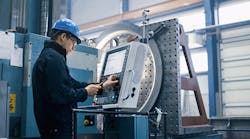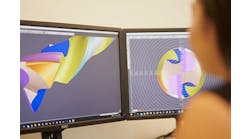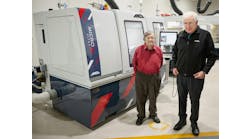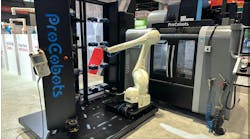When it comes to the omnipresent pressure to automate, we may find ourselves feeling that the challenge is too great or too impractical for our situation. Perhaps we ask, “How do I get started?” or “What options are right for my company?”
In the blizzard of options, we hear buzzwords like robotic integration, artificial intelligence, automation, digitalization and unmanned operation. In this mixed-up word salad, is it any wonder that so few feel comfortable with developing an automation plan for their future?
Also read: Think like a machinist
It seems that most folks understand that they need to do something, but what can they do to make actual progress toward this goal?
Enter multi-axis, multi-tasking machines with bar-feeders. These machine tools are a natural progression for manufacturers looking to enter into the automation arena while being able to leverage their current knowledge and move it to the next level.
There are inherently three elements of multi-axis, multi-tasking, bar-fed automation. Perhaps you are asking, “What is multi-axis, and how does that help? What do we mean by multi-tasking? And what can a bar-feeder do?”
Multi-axis: This means we’ll be employing more than the three standard axes of x, y and z to machine the features of a part. Typically, this will mean that we have access to more than a single side of a part. If we are using a fourth axis table or trunnion, we now can access a minimum of three of the available six sides of a rectangular part. If we are utilizing a five-axis machine, we will be able to access five of the six sides to be able to machine features. This eliminates additional part handling, extra setups and fixtures and even additional machine tools needed to make a complete part.
Multi-tasking: This means that we can have a single machine tool perform the function of two or more traditional machine tools. In place of the traditional turning and milling centers, we now have these technologies built into a single machining center. This eliminates the need to transfer parts between machining centers, reduces labor costs and increases the throughput.
Bar-fed automation: This is performed by a unit attached to the machine tool with the ability to feed, automatically, a bar of stock into a machine tool to continuously machine part after part. Enough bars of stock can be loaded into the bar-feeder to cover the hours needed of run time in a shift or day depending on the particular setup or job.
When we combine these elements into a single platform, we call that multi-axis, multi-tasking, bar-fed automation, or more simply referred to as multi-tasking.
This type of automation is about as plug-and-play as it gets in the automation realm. The machine tools are readily available and highly developed with years of success stories already behind them. The ramp-up phase for full integration is as short as installing the machines and training the operators and engineers to use the equipment. While the cost of a full-scale automation effort can be extremely high, the cost of this type of automation might be less than you expect.
Additionally, purpose-built robotics and machines have a high risk of being irrelevant if business needs change during the implementation phase. We have seen examples of major investments into equipment and machine tools become outmoded when the project they were purchased for is no longer needed or the needs of the business change. This reality is costly in terms of cash, effort and emotional investment.
When a multi-tasking machine tool is purchased for a specific project or contract and the needs of the business change, the machine can most likely be utilized for the new project without having to be replaced with yet another costly investment. This flexibility is a hallmark of multi-tasking machines. The ability to shift gears swiftly when needed is invaluable in the everchanging marketplace.
Another easily overlooked benefit is the high level of accuracy built into the better multi-tasking machines on the market. We have seen and demonstrated the ability to hold tolerances well below .001 inches on a consistent basis.
This allows high-value machining contracts, such as aerospace, medical or defense contracts, to be acquired that can quickly provide a return of the investment made on the machine tools and peripheral equipment involved.
Also, by creating as many features at one time in a single setup, the opportunities for non-conformances is drastically reduced. The more features we can create at once, the more likely they will be consistently correct.
In terms of labor costs, many folks are experiencing a labor shortage of epic proportions. With multi-tasking, we can do more with less. We are not saying that this style of machine is a replacement for people. People are always going to be the backbone of any successful operation. What we have seen is those who utilize multi-tasking machines are able to get more work done in a day. We have also seen the multi-tasking machines relieve workloads that are bottlenecked in front of older machine tools that only have a single purpose.
The more closely folks look at multi-axis, multi-tasking, bar-fed machines for their automation needs, the more they will find creative and successful paths that will lead to higher profitability and job satisfaction and lower labor costs.
Andy Watkins is direct sales manager at Romi Machine Tools in Erlanger, Kentucky. Contact him at [email protected].





